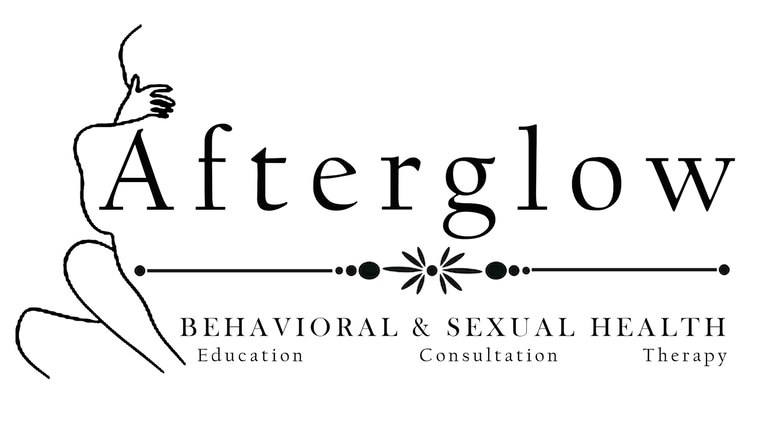Beyond the Strap-On: Busting Myths About LGBTQ+ Sex Toys and Pleasure
This sharp, funny, and affirming blog dives into the most common myths and misperceptions about sex toys in LGBTQ+ communities—challenging the tired tropes of strap-ons, stereotypes, and “imitating straight sex.” With real data, gender-neutral language, and a therapeutic tone, the post explores how sex toys are not only valid but vital tools for exploration, affirmation, and pleasure across the entire spectrum of queer identity. Whether solo or partnered, this is a must-read for anyone looking to rewrite the narrative around LGBTQ+ sexuality and sexual wellness. And let the afterglow begin.
GENERAL SEXUAL HEALTH
Dr. Kent
8/7/20254 min read


There’s a peculiar thing that happens when mainstream society tries to talk about LGBTQ+ sex: it either gets awkwardly medical or cartoonishly over-the-top. It’s either “what do they do exactly?” or “is it just gallons of lube and a utility belt of strap-ons?” That’s the range. Subtlety? Complexity? Emotional connection? Not in the heteronormative highlight reel. And when it comes to sex toys, the stereotypes get even more absurd.
For too long, sex toy marketing—and the larger conversation around it—has treated LGBTQ+ pleasure as either a novelty or an afterthought. The default assumption is that toys are for cisgender, heterosexual couples adding spice to missionary Tuesdays. Everyone else? Apparently stuck in a funhouse of neon latex and confused straight people asking, “But who’s the man?”
So let’s clear the glittery air and bust some myths wide open—therapeutically, humorously, and with the kind of insight only data and a healthy sex-positive attitude can provide.
Myth #1: “LGBTQ+ folks don’t really need sex toys—they’re already doing ‘unusual stuff."
Let’s decode this, shall we? What people usually mean is, “Isn’t LGBTQ+ sex already kinky enough?” This myth is wrapped in the idea that queerness is inherently exotic, therefore anything additional must be extra. But pleasure isn’t a spice rack—it’s not about how weird you can make things. It’s about tuning in to what feels good in your body.
A 2022 study published in Archives of Sexual Behavior found that LGBTQ+ individuals are more likely to use sex toys than their heterosexual counterparts, often because they are more comfortable exploring beyond conventional ideas of sex. This isn’t about being freaky—it’s about being free. When society doesn’t hand you a sexual script, you get to write your own. And that script often includes innovative tools, mutual curiosity, and yes—sometimes a beautifully designed silicone plug.
Myth #2: “Sex toys are only for cisgender gay men and lesbians.”
False, limited, and frankly, lazy. The truth is, sex toys are used across the full spectrum of LGBTQ+ identities, including nonbinary, intersex, queer, asexual, and trans folks. In fact, many toy companies are finally catching up by designing gender-neutral and body-affirming tools—items that aren’t based on outdated assumptions about anatomy or attraction.
Take trans and nonbinary users, for example. A 2021 survey conducted by the Trevor Project revealed that 40% of trans and nonbinary youth reported using sex toys as a way to reconnect with or affirm their bodies. For some, it’s a way to explore what feels good outside of the labels imposed on them. For others, it helps relieve gender dysphoria. Sex toys, in this context, are not indulgent—they’re healing.
Myth #3: “Using toys means your partner isn’t enough.”
This one deserves an eye-roll so intense it could power a city. Toys aren’t replacements—they’re enhancements. And in LGBTQ+ relationships, where communication about needs often happens more openly, toys can be one more language of intimacy.
The Kinsey Institute found in 2023 that queer couples who use sex toys together report higher relationship satisfaction and stronger sexual communication. Toys can relieve pressure, create new experiences, and help partners co-author pleasure without relying on outdated gender roles. In other words: it’s not “you or the toy”—it’s “us and the toy, high-fiving in the afterglow.”
Myth #4: “Sex toys are too gendered for queer people.”
You know what? This one has some truth to it—at least historically. Sex toys have long been marketed in a pink-and-blue binary, labeled “for men” or “for women” with little in between. But the tide is turning.
Companies like Wildflower, Enby, and B Vibe are reimagining toys for people, not parts. They’re creating devices that don't assume how your body looks or who you're sleeping with. They’re labeled by function, not gender. Because guess what? Bodies vary. Desires vary. And pleasure? That’s personal. Not everything needs to be shaped like a penis or packaged like a bachelorette gag gift.
Using a toy that feels affirming to you—whether it buzzes, thrusts, glides, or wraps around—is a radical act of self-care and self-definition. That’s not just sex; that’s liberation.
Myth #5: “LGBTQ+ people using toys are just trying to imitate heterosexual sex.”
Let’s all pause for a laugh. If anyone’s imitating anyone, it's definitely not queer folks copying the missionary-married-for-12-years-no-talking version of hetero sex.
LGBTQ+ individuals have been leading the charge in redefining what sex is—moving beyond penetration-focused models to center things like touch, connection, exploration, and mutual fulfillment. Toys are part of that ecosystem. They’re not about mimicking some “norm”—they’re about expanding what’s possible. Strap-ons, for instance, aren’t about pretending to be a cis man—they’re about sharing sensation, reversing roles, deepening connection, and enjoying bodies in ways that feel right for everyone involved.
To reduce that to imitation is like saying drag is just “playing dress-up.” It misses the point entirely.
Why It’s Okay (and Powerful) to Embrace Sex Toys as LGBTQ+
For many queer folks, sex was never taught—it was learned in whispers, on message boards, or by trial and sometimes error. There were no health classes for gender diversity, no late-night TV ads about prostate joy or pelvic floor pulses. So sex toys aren’t just fun—they’re tools of education, affirmation, and liberation.
Overcoming stigma is hard when shame is built into the narrative. But choosing to explore, to enjoy, and to honor your own pleasure—whether solo or with partners—is a courageous, queer-as-hell act of defiance. It says: “I deserve this. I own this. I define this.”
Sex toys can help LGBTQ+ individuals process trauma, reclaim autonomy, build intimacy, and have a great time while doing it. They’re not optional extras in a toy chest—they’re invitations to deepen your relationship with yourself and your partners, in whatever way feels true to you.
So let the world misunderstand. Let the stereotypes pile up. And then knock them down with a perfectly placed vibe, a lube that sparkles, and a knowing smile that says: you have no idea what you're missing.
And let the afterglow begin.
Connect with us
© 2025. All rights reserved.
dr.kent.sexhealth@gmail.com


